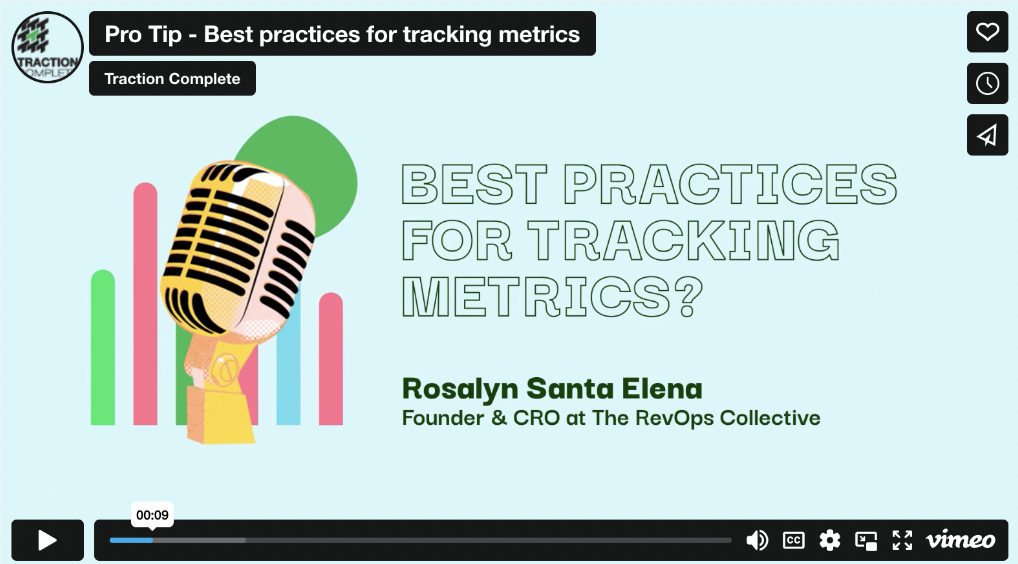Amidst a recession and mass tech layoffs, many of us are being asked to make organizations leaner than they have ever been. We hear things like “get more efficient,” “run more with less,” “cut back on systems” and “we have to cut back on headcount but not lose any revenue.” If you have not had to do this before, keep reading. If you have, you are wearing a Revenue Operations (RevOps) hat already, and this will hopefully be a nudge to get ahead on this, that is, if you are not already being asked.
Just know it’s OK to show gaps. We all have them! Identifying and addressing them is always better than doing nothing.
What Is RevOps?
Let’s level set by starting from the beginning. RevOps means orchestrating people, processes, technology, data and enablement to achieve business revenue targets. Most organizations with a RevOps department started with sales operations and marketing operations and have evolved to other functional areas over time and growth. RevOps is chartered to align departmental goals, people and teams to build and maintain systems and tools, while providing reporting and analysis to drive more effective business decisions.
RevOps is to a business as the spinal cord, brain and synapses are to our bodies. The functional areas included in RevOps are dependent upon the company size, trajectory and organizational structure. Typically, sales, marketing, customer success, channel and enablement will be involved with dotted lines to and/or working relationships with accounting, finance, HR, IT and legal.
RevOps is the infrastructure to support the end-to-end revenue process across the customer lifecycle. This includes people, process, technology, data and insights, but also strategy and enablement. RevOps helps with alignment, visibility and predictability across the entire go-to-market organization to drive repeatable and scalable revenue. It’s not just about marketing or about sales, or even post-sales; RevOps supports the entire organization from top-of-funnel marketing to prospect to customer and through retention and expansion.
The Rise of RevOps
The last few years have shown how critical a strong RevOps engine is. With current market volatility, having a solid operational infrastructure has allowed companies to quickly assess their current state, determine the next best actions and put into play changes to their GTM strategy. The companies that were able to pivot quickly were the ones that had the right data and the insights to understand what and how the business needed to change to accommodate the changes in the market. In turn, they could operationalize those decisions throughout the entire organization.
In addition to market volatility, several factors have given rise to RevOps. One is the SaaS model of recurring revenue where the customer’s journey begins (vs. ends) with the first contract signed. Retention and expansion within the customer base is more critical than ever before. In addition to the recurring revenue model, selling motions and routes to market are more complex. Think about product-led growth, self-serve models, channel offerings, partner-led selling and more.
Buyers are more informed and more demanding than ever before, which has led to these creative ways of doing business where companies need to meet the buyer where they want to be met. Technology and data have exploded in both usage and innovation, which has changed the landscape as well. There is specific tech for every part of the funnel.
Selecting the right technology, then configuring, administering and maintaining that tech by ensuring tech is integrated and working together is a massive job in itself. It often falls on the RevOps team. Training, enabling and driving the adoption of this technology is also a significant part of the RevOps team’s responsibility.
RevOps plays a big role in gleaning comprehensive, meaningful insights from data as well. The availability and significance of data have also escalated. Delivering the right data at the right time to the right people is more critical than ever before. Comprehensive, meaningful insights from the data are a “must-have” for businesses to be able to achieve their revenue goals.
Your Five-Step Plan for Optimization
As companies work to do more with less by tightening budgets and resources, they need to be more efficient and effective across every customer journey touchpoint. This is where RevOps comes in through the collective lens of people, process, tech, data, insights, enablement and strategy to ensure that these are optimized to ensure the best revenue outcomes. RevOps takes a holistic view across all functions and groups that touch the buyer and customer to look for opportunities to improve.
So, what can you do now to take action to make things lean? Here are our top five tips.
1. Run a gap analysis across people, processes, technology and enablement
Making RevOps leaner starts with reviewing your current state. You will need to audit the people, process, technologies and enablement as they are, define the gaps and then game plan where to make the moves. Think of a SWOT analysis where you identify the following:
- Strengths, or what works well
- Weaknesses, which could be skills-related or tech that’s not fully implemented
- Opportunities, such as low-hanging fruit
- Threats, including risks like technical debt, not having enough skills and headcount
This is not a fast or easy process. Incremental improvements will help prove what works quickly and set you up for future buy-in from your stakeholders, finance and internal business partners.
Tips for optimizing and spotting efficiencies:
- Look in areas by top priority first
- Use a gap analysis model (like Fishbone or SWOT, as explained above)
- Make a slide deck with your gap analysis that you can present across teams, plus an up-leveled version for executives
- Build out, update and make a plan to manage your RevOps playbook while you’re in the process of reviewing and documenting
Focus on business capabilities, and assess the current state by rating your business capabilities against the business impact, the current state and the level of effort. Tackle items with the worst current state that have the biggest impact to the business with the lowest amount of effort.
2. Build out a measurable roles-and-responsibilities model for your RevOps and Go-To-Market teams
Clearly spell out who is responsible for what and what each person has access to in what system. Review rules of engagement across the entire GTM team from marketing to SDR/BDR, sales, post-sales, customer success, services, implementation, support, etc.
Look for poor handoffs, unclear processes, unclear R&R or lack of clear expectations, and start to put better policy, process and governance in place to avoid dropping the ball, wasting time or delivering poor customer experience.
Tips:
- Use a model like RACI (Responsible, Accountable, Consulted and Informed) to review who is responsible for what and where you have gaps
- Review systems and process ownership and systems permissions
- Determine if your operating model makes sense for where the business is at today (e.g. centralized vs. decentralized vs. hybrid)
- Set up a ticketing system for your team in Asana, Wrike, Monday or a custom object in SFDC, and identify opportunities for ongoing training to close skills gaps
3. Implement a process for roadmaps, project briefs and/or project charters
If you don’t have a RevOps roadmap, you will need one to clearly spell out RevOps initiatives and how they are tied to overall company goals. If you already have one, reassess the roadmap to ensure it still makes sense. The roadmap should show strategic initiatives, as well as tactical projects, that tie back to the overall GTM and Revenue goals. Each initiative should show standard project criteria such as the objective, key stakeholders, active participants, the expected timeline, targeted completion dates, RACI, next steps, level of effort, prioritization, etc.
A project charter turns into your communication tool to walk around for feedback and input, share across teams, build momentum, show transparency and obtain buy-in and sign-off throughout the entire project or program lifecycle. It is by far the most important communication tool for strategic projects, but not all projects are that grand and require this.
Tips:
- A project charter will include your roadmap, roles and responsibilities, project/program goals tied to overall company goals, impacts within and across departments.
- A project brief is usually used for smaller-scaled, less strategic projects, with the same purpose as the project charter—to build buy-in and ensure effective communications
4. Optimize the Tech Stack
When looking for ways to be more efficient and effective, leveraging technology makes sense to reduce manual work, minimize the potential for errors and automate or integrate where possible. But oftentimes, we have systems and tools that are not being used in the most optimized manner or not used at all.
Now is the time to evaluate the tech stack to assess:
- What technology is actually used and how it is being used
- Where you can better leverage the technology that you have to unlock more use cases, solve more challenges, drive better productivity and eliminate manual steps
- What technology is redundant or not being utilized at all for and could be consolidated or eliminated
- Where additional training or enablement needs to happen to improve adoption, provide more value and better serve the GTM team
- Where better integration can be configured or designed to allow better visibility and a more seamless experience
5. The Metrics that Matter
Many organizations have too many metrics, not enough metrics or the wrong metrics. Now is the time to be abundantly clear on GTM goals and objectives, and then make sure you are looking at the right metrics to assess how the organization is tracking toward and performing against those key goals and objectives.
Cut out the noise, and focus on the top metrics that provide deep insights into how the organization is performing. This will provide leading indicators of where to pivot, change direction or lean in.
Don’t measure everything; instead, measure the things that matter.

Conclusion
The value of RevOps is simple. You cannot significantly accelerate revenue growth and scale a business for future growth without it. And what is interesting is that RevOps is still significantly understaffed. Even more interesting is that in a downturn, RevOps professionals are being cut because they are often misunderstood and undervalued. A lot of this has to do with leadership skill gaps in RevOps; areas such as knowing how to up-level communications, obtain executive buy-in and allies and showing constitution to the revenue goals.
Looking for more ops advice? Check out “The Revenue Optimists” Video Series from WIR Supporter sponsor, Traction Complete!




